Google is a behemoth when it comes to product searches.
It even beats out Amazon in product search reach, which is insane when you think about it.
Amazon is basically a dedicated product search engine, but 35% of all online purchases start with a Google search.
Not that Amazon isn’t keeping pace. It’s just that Google has a few things that Amazon doesn’t.
Like rich snippets.
With the sheer amount of people searching for products and product reviews on Google, getting to the top of the SERPs should be a priority.
Rich snippets give shoppers the ability not only to see products relevant to their search but also get their questions answered, read reviews and compare prices from one place.
It’s like a complete product encyclopedia.
That’s why more e-commerce companies need to get on the Google rich-snippet bandwagon.
The importance of rich snippets for e-commerce
Rich snippets are bits of code that make it easy for search engines to organize information.
Type almost any product description into Google search and you’ll see at least one type of rich snippet appear, if not multiple types.
Having a rich snippet gives you an immediate boost to your SEO.
Studies show that having a rich snippet can increase click-through rates (CTR) by 677% and drive 20-40% more traffic than product links without them.
Any type of content can get a rich snippet with the right code.
But they’re especially effective for e-commerce product links because consumers are highly visual when it comes to shopping.
There’s a reason why products with high-quality images sell better than products with poor-quality or no images, for example.
Shoppers want to see, compare and research before they buy. Snippets give them that option.
Take a look at the following image:
Which link stands out the most?
If you’re looking at the organic search results, you’re probably going to gravitate toward the one with the clear star rating.
That’s a rich snippet for e-commerce in action.
In an experiment from Catalyst Search Marketing, one brand saw a 150% improvement in CTR when they added review stars (rich snippets) to their product pages.
But that’s not the only way to do it.
Your eye probably also went to the other images at the bottom of the search page:
This is actually Google’s own snippet designed to clarify your search.
If I click on the last image, for instance, I get more rich and featured snippet results.
This tells me which stores carry the product I want and how much it costs at each store, and it answers related questions I might have about the product.
That’s a ton of helpful information from one product search. Like I said, it’s an encyclopedia.
If I search for the same thing on Amazon, on the other hand, I see this:
I get some of the same results (pictures, product ratings, prices), but I have to clarify my search results, and if I have questions (like, is this the latest model?), I’m out of luck.
Google’s rich snippets add a bit more to the product search experience.
But it’s important to note that there’s more than one type of snippet you can use.
In fact, there are five of them.
And you probably want to use them all in some way or another.
1. Product Schema
Rich snippets involve the use of code called Schema Markup, or Schema.
So when I say, “Product Schema,” what I mean is code that showcases basic product information.
You might see this information displayed like this:
Or like this:
Or this:
What makes it product schema is whether or not it features a product and relevant information about it, like color, size, and so on.
There are many different ways you can list that information, some of which might be more helpful for your searchers.
If a product has specific dimensions compared to similar products, for instance, you want to list that in your product markup.
You can find the different types of Product Markup at schema.org, but it looks a bit like this:
If you’re not a coding expert and that looks overwhelming to you, fear not.
Google’s Structured Data Markup Helper is a bit more user-friendly.
You can select the “Product” type and input the product page URL, and the helper will guide you through the rest of the process.
Once you’ve filled in all the relevant fields, simply click “Create HTML.” This will give you the code you need to copy and paste into your website.
Adding the code to your website might be another challenge because you have to put the code in a specific place.
If you’re using a platform like WordPress, there are a few plugins that can help you input code.
Other sites like Shopify have apps and add-ons that can place your code for you.
You don’t have to be a developer to use rich snippets for your product searches.
Of course, if you still feel hesitant about using product schema, you can always bring in a developer to help you out.
Just be sure that your product pages contain all relevant and current product details.
If your product pages don’t list a price or include an image, for example, then your schema won’t work.
No developer will be able to get you the results you want unless your pages are optimized.
2. Reviews and Rating Schema
Around 90% of consumers will read at least one online review before they buy online.
So it’s worth it to add reviews to your product pages.
Adding reviews to your product schema is a great way to boost shopper confidence.
Take a look at the rich snippet when I search for the PlayStation 4:
In the corner is a series of “trusted reviews” from other sites that have reviewed the product.
Sometimes these will feature product reviews from a specific URL listing, but if your product is being reviewed or compared on another site, this is a great place to showcase them.
If I scroll down a bit on the snippet, I see a link for more reviews.
That link leads me to a Google Shopper review page with more detailed reviews:
This gives me a better idea of whether or not this product is really worth buying, and it provides me with links to the cheapest stores near me that sell it.
But reviews and rating schema don’t have to be this complicated.
Just having a star rating next to your product is still good enough to pique interest.
In fact, the star rating is the number one factor used by consumers to judge a product or e-commerce business.
Even if your product schema looks like this:
It’s still better than a product listing without it, right?
Even if your product doesn’t have a high star rating, showing that it’s been rated and reviewed can still be a booster for SEO.
If nothing else, it stands out from the other product listings without images on the SERPs.
You can find the information for adding Reviews and Rating schema code here.
It’s probably less complicated than other forms of schema markup, but it still might throw you for a loop, so be sure you know how to add it properly.
Again, Google’s Data Markup Helper is a good alternative for those who aren’t code-savvy.
When you’re in the Helper’s toolbox, click the ratings and reviews section to fill in the appropriate fields.
If you’re using Shopify or a similar service, you can add product star-rating systems using a few of their apps, like Rating Widget.
Most of these apps will integrate with Google’s rich snippet feature so that your product ratings also appear in search results.
Just be sure to double-check whether or not an app or add-on has that functionality.
Not all of them do.
And having a rating system is only really worthwhile if people can see it properly.
3. Price Schema
Next to product reviews and ratings, pricing is a big factor when it comes to purchasing decisions.
And comparison shopping is a big deal.
Around 46% of online shoppers say they want more product price comparisons from e-commerce sites.
The schema markup for price allows you to put that information front-and-center on the SERPs.
Check out the difference in pricing for a single product search:
Do you buy the $53 black blazer with 4.5 stars and 89 reviews?
Or do you go for the $425 blazer with 4 stars and 19 reviews?
How about the $198 blazer from J.Crew with 4.5 stars and 276 reviews?
Seeing how these products stack up against each other helps consumers make better and faster decisions about which one will work out the best.
If someone is looking for a product based solely on the price, they’re going to eliminate the ones out of their price range.
This automatically narrows down search results.
If your product fits their needs, they’re more likely to click, even if you have a lower star rating.
This also works for other rich snippets.
Look at this example from Nordstrom a little farther down the SERPs:
The rich metadata includes information on sale pricing.
Is this the most eye-grabbing example of a rich snippet especially compared to the other example? Not really.
But it’s still good because it’s selling a product based on price.
If you wanted a really high-quality blazer but didn’t want to drop $500, seeing this might change your mind.
You can also highlight price changes in image product listings, however.
Here’s an example when I search for Men’s sports coats:
In place of reviews, there’s an indication that certain coats are on sale.
Sometimes these snippets will say, “Discount available” or “Price drop” rather than a percentage.
Either way, if I’m shopping based on price, I might be more tempted to look at those products.
I would be more apt to look at them even though they don’t have any star reviews.
Adding pricing schema will be a similar process to adding any other type of schema.
You can use the Structured Data Markup Helper to highlight the price on the page, select “Offer” and then “Price.”
This will then give you code to place on your website that will show up in the search results.
If you have your product featured on Google Shopper, it will pull any price changes or discounts as well.
Consider adding tags like “sale” or “discount” that can help thrifty shoppers find your products faster.
4. Product Availability Schema
Another piece of schema markup you want to add is availability.
There’s nothing more frustrating than finding the perfect product only to discover that it’s sold out and you have to sign up for the waiting list.
Or, worse yet, come back later to see if it’s available again.
If someone leaves your page because your product is unavailable, there’s a chance they might never come back.
So you want to include that information up front.
Here’s what that looks like with Product Availability schema:
Adding this little code can really help your bounce rates, especially if you suffer from “soft bounces.”
Soft bounces happen when someone is engaged on your site but doesn’t end up buying.
Maybe they scrolled through the product page, read reviews, looked at images or watched a product video, but they didn’t purchase the product.
Sometimes this is due to factors like pricing, but more often than not it’s the result of a product being out of stock, either fully or partially.
Generally speaking, if someone is worried about the price, they won’t be as engaged as someone who is actively ready to buy.
So if you see a lot of soft bounces, it could be due to product availability.
You can solve this problem by alerting customers to the status of your products before they click on them.
The schema markup for Availability can be found here.
One thing you might notice is that the code for availability is not the same as other schema markups on this list.
Unfortunately, there’s not a handy shortcut.
With this one, you’ll need to actually use the code information from schema.org and add it in manually.
That might be a pain, I know. Especially when you’re wading through code that looks like this:
Of all the rich snippets on this list, this is the one you will probably be the most tempted to skip.
But if you’re really looking to rank and to sell your products, you’ll want to go through the effort.
This is doubly true if you’re suffering from high bounce rates or if your products sell out quickly.
Having that information for customers handy before they ever visit your store will improve your customer experience and improve your sales in the long run.
So, get a developer and figure it out.
5. Video Schema
Not every product you create needs a video, but some do.
Video is a great marketing tool for e-commerce, and I’d love to see more brands use it.
Here’s a quick Google search for an anti-snoring product with the typical rich product snippets:
If I keep scrolling down the SERPs, however, I also see a series of videos that explain how to use the product.
These video snippets are also on the homepage of the e-commerce site as explainer videos:
I like videos for marketing almost any type of content, but they work so well for product marketing.
Explainer videos and product videos help create engaging dialogue, explain complexities about the product, grab attention and help customers connect with a brand.
They’re all-around good marketing.
Which is why using Video schema is a great option if you’re already adding rich snippets to your product pages.
Take the company Blendtec, for example. Here’s a rich snippet featuring a demonstration of one of their blenders:
But if you keep looking through the search results, you’ll also come across their YouTube channel.
They feature dozens of videos of their product in action, blending things that shouldn’t be blended (a series called, “Will it Blend?”), like iPhones and glow sticks.
Because video marketing is such a big part of the brand, it makes sense for them to use Video schema to market their products on the SERPs.
If your product already has (or is ripe for) explainer videos, then you will want to add this rich snippet to your search results.
Similar to the Availability schema, Video schema is also a little trickier to include.
You can find the code here (but sadly it’s not an option on the Google Structured Markup Helper).
Here’s an example of what the code might look like:
Messy? Yes.
Worth it? Absolutely.
If your products don’t already have a video, consider making one for them.
There are several services out there that will help you create them for your best products (or those that need explaining the most).
This gives you an extra chance at getting ranked, and it helps your customers connect to your product.
Bonus Option: Rich Ads
There is another option I want you to consider, particularly if you’re trying to rank.
While this isn’t a Schema snippet, exactly, it still works relatively well for selling your products, depending on your niche.
It’s the paid option of rich snippets called Rich Ads. Otherwise known as Google Shopper.
Instead of adding Schema code to your site, you can pay for sponsored snippets.
The process is similar to what you would do with a rich snippet, only you use PPC advertising to ensure your products show up for specific keywords.
You can also set which images will appear, what rating information to show, and display any other useful information on deals, availability, and shipping.
They’re not just for online shopping, either. Rich ads can also boost sales in physical stores.
When one company used local keywords to target customers with rich ads, they saw a 108% increase in in-store visits and their offline revenue doubled.
You can get a sponsored snippet through the Google Merchant Center.
You simply upload your product information, and you can create ads through Google Shopping or other Google services, like YouTube.
If you have the budget to run AdSense ads, consider running Google rich ads, too.
This will give your products the greatest reach, and help shoppers find you across multiple channels.
Keep in mind that some of the biggest brands are already shelling out big money to have sponsored snippets for specific products.
You can clearly see who dominates the search results for the keyword “men’s jeans:”
Using this type of rich snippet isn’t cheap, but it can be worth it if you really want to stand out from your competitors.
If you’re already launching PPC campaigns for your business, then try out a paid snippet or two.
You can always monitor your results and go back to the free version (or do both) to maximize your rankings and get your brand out there.
Just be sure to look for keywords that aren’t as competitive so you wind up in a top spot.
There’s no point in paying for a rich snippet if you’re stuck on page 2 of the SERPs.
Conclusion
Adding rich snippets to your e-commerce site might seem a little complicated at first, but it’s worth it in the long run.
Not only does it improve the reach of your product marketing, but it also improves the shopping experience for your customers.
It can boost online sales as well as offline sales.
If you’re not sure where to start adding rich snippets to your e-commerce site, check out this guide to getting started.
You will probably need to spend some time copying and pasting the code and creating product metadata.
But don’t worry. The ultimate payout for your SEO and sales will be far worth the effort.
What are your results from using Google’s rich snippets or rich ads to market your products?
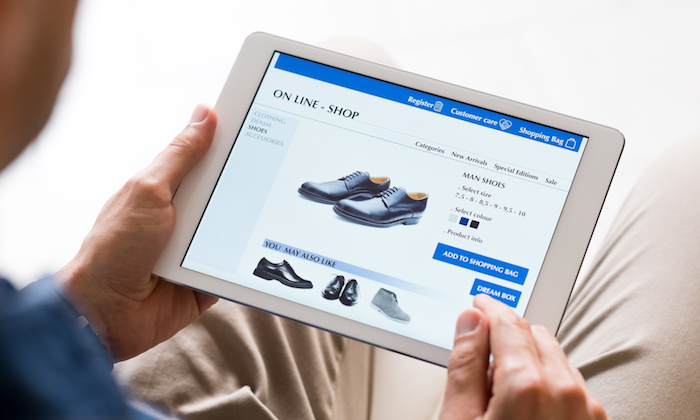
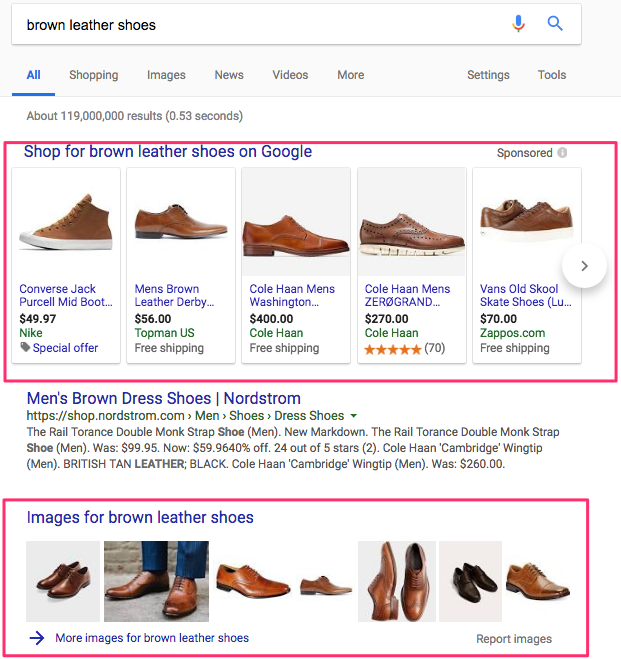
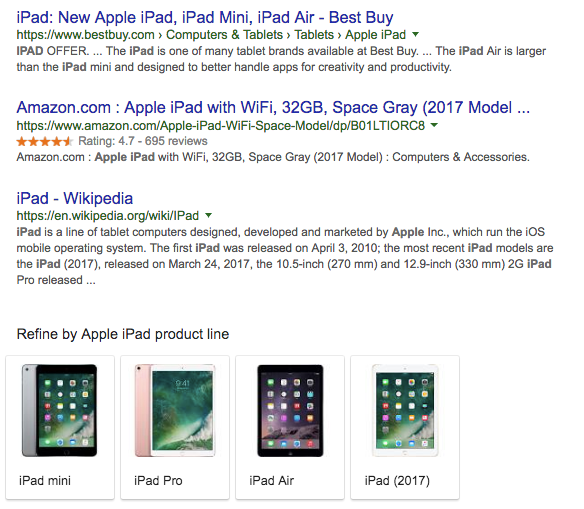


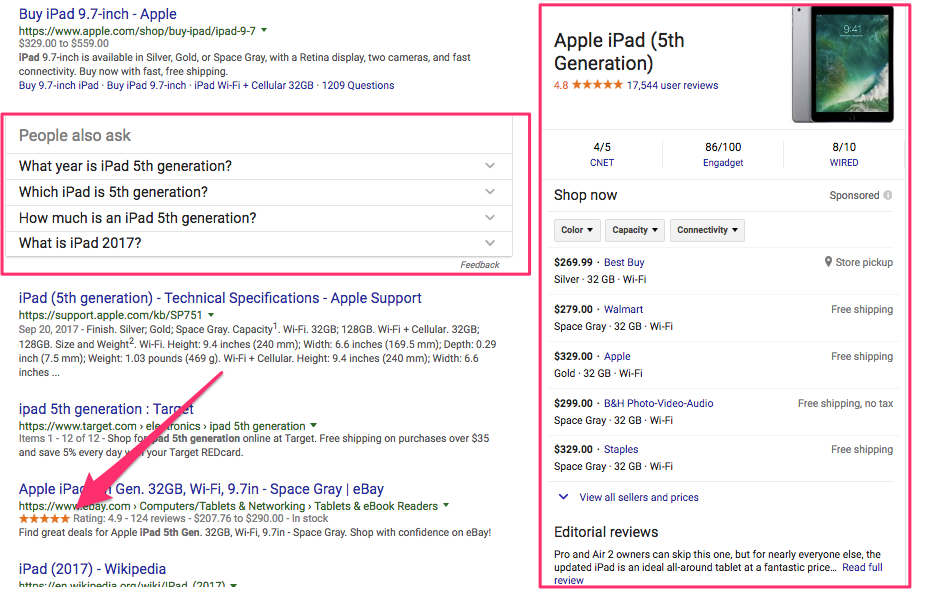
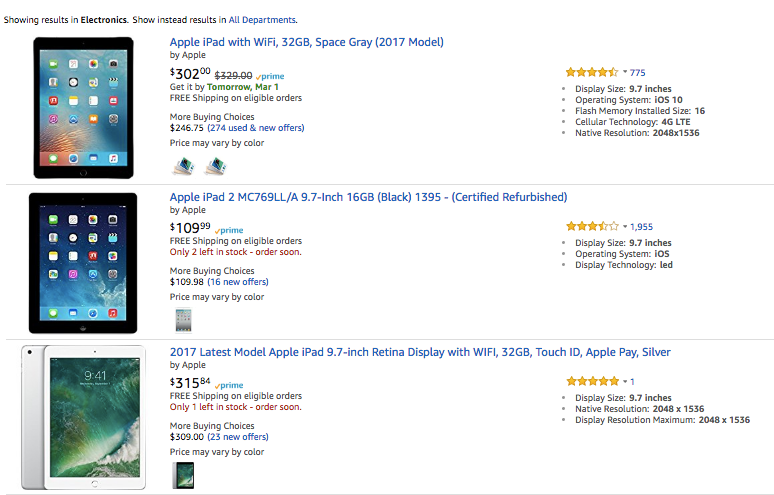
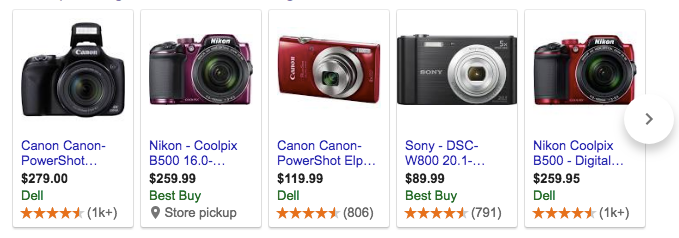
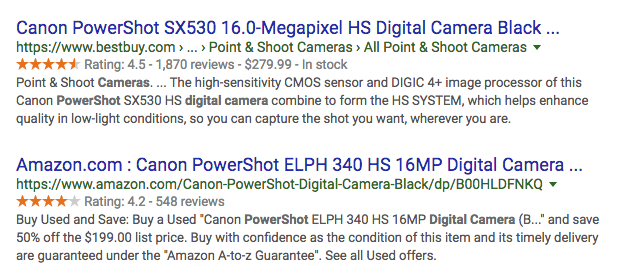
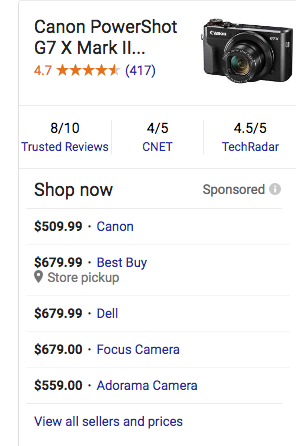
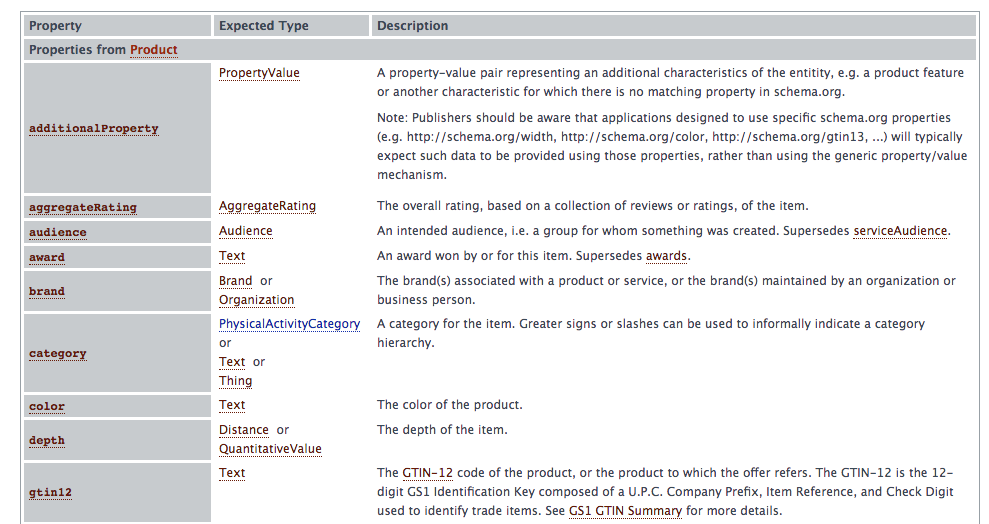
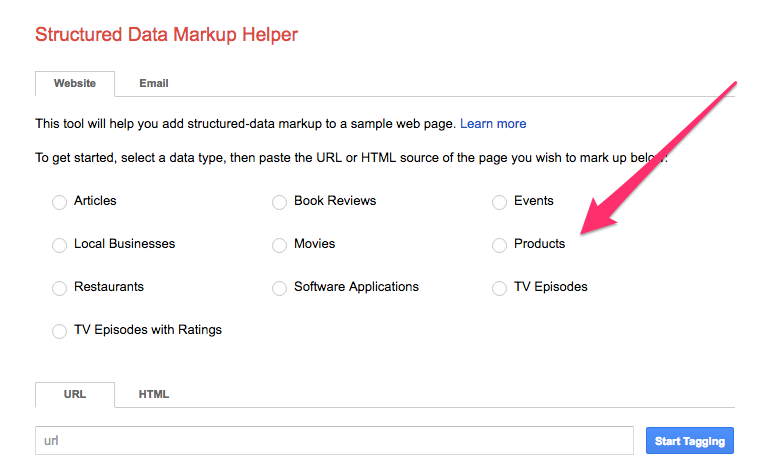
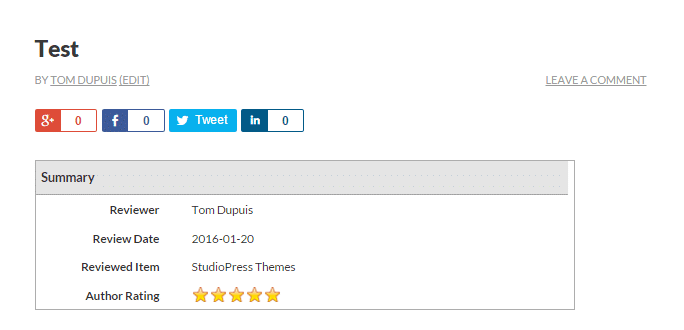
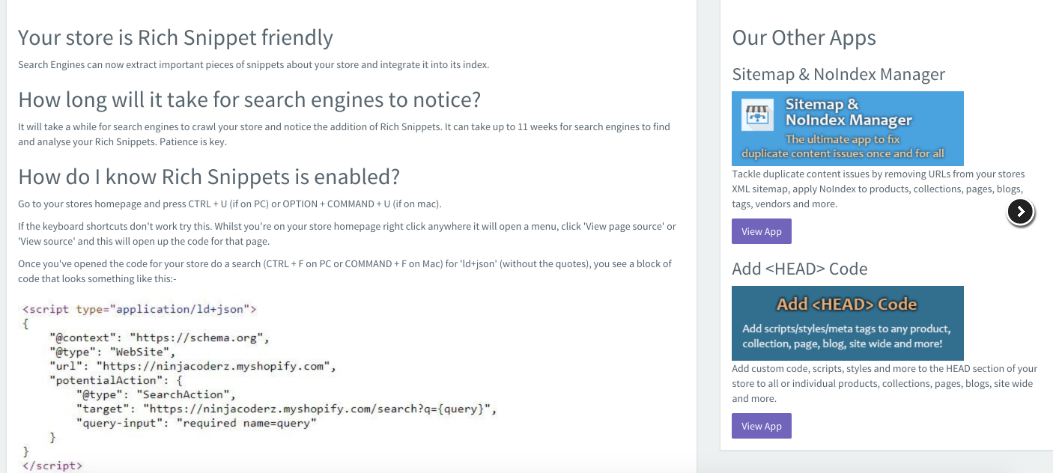
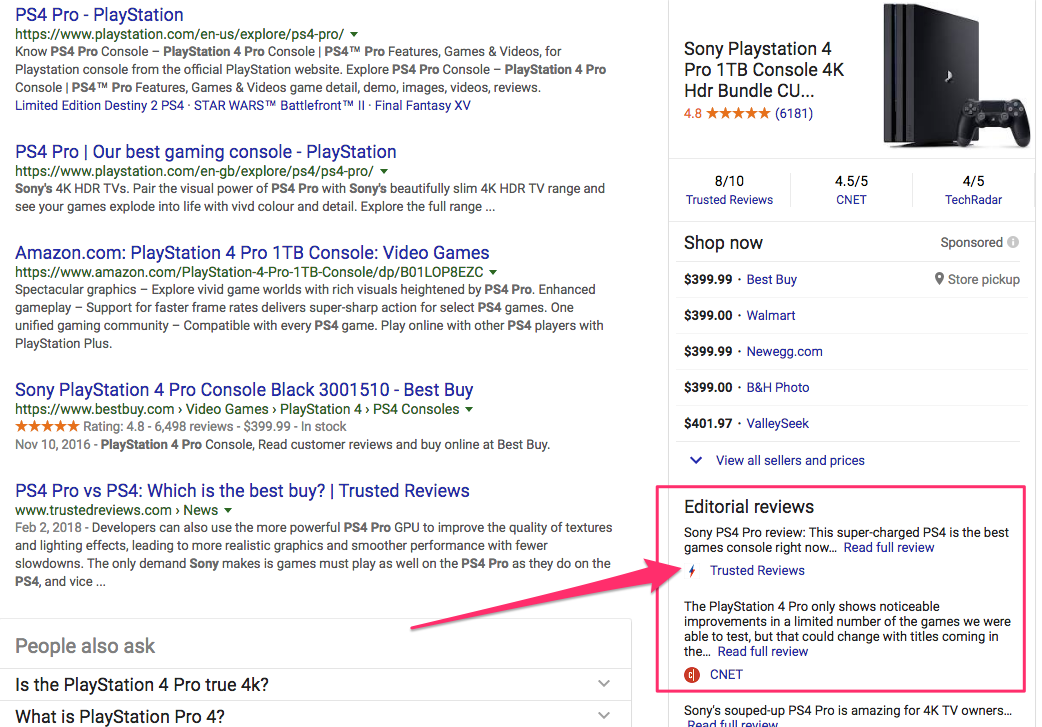

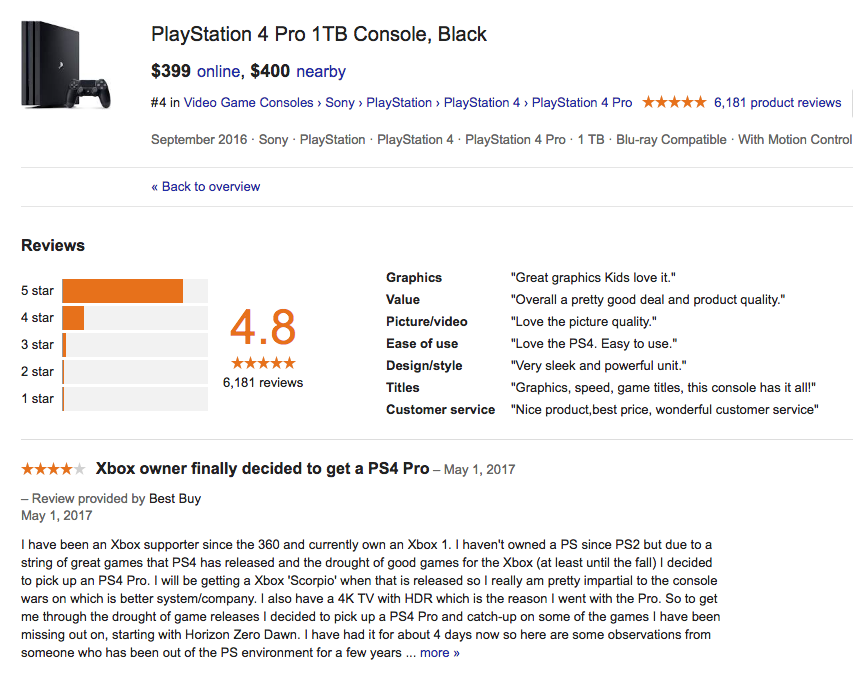

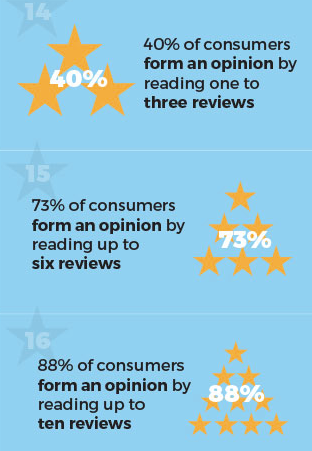


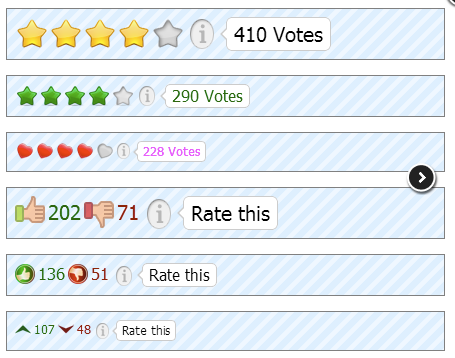
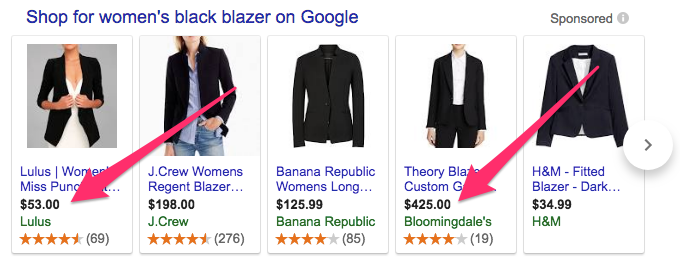

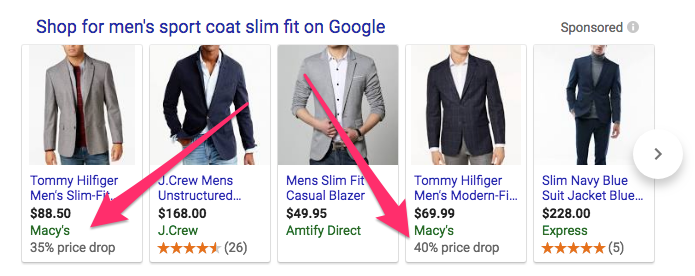
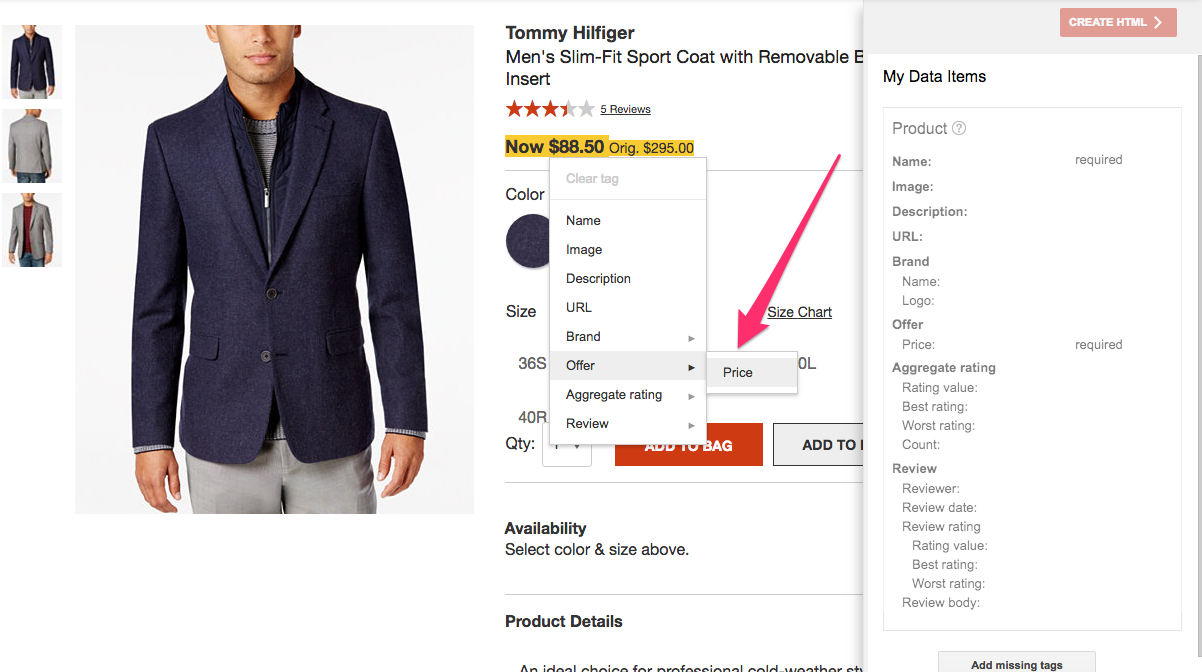

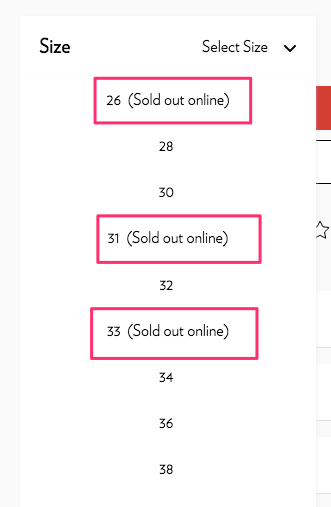
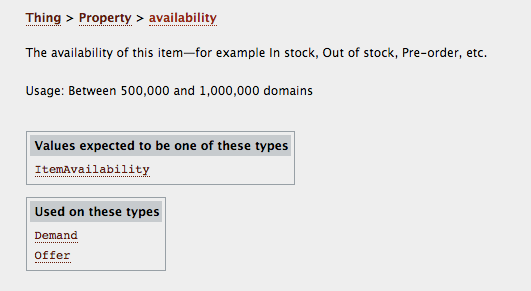
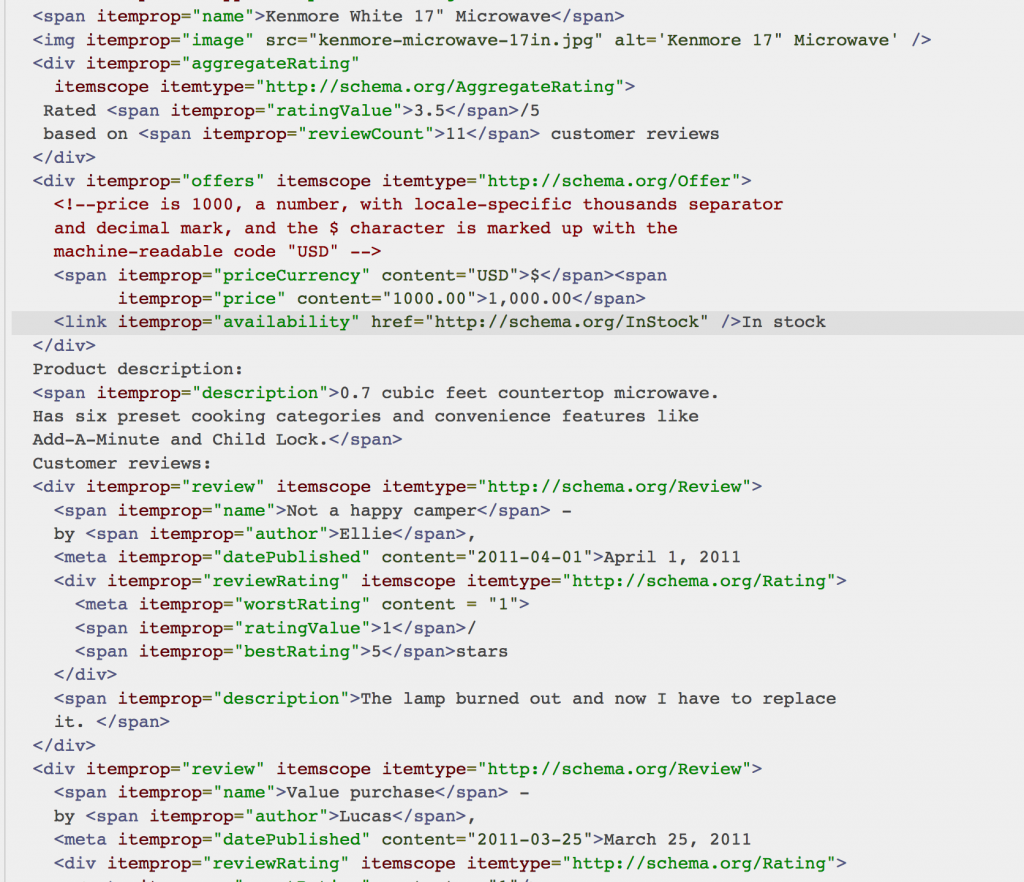
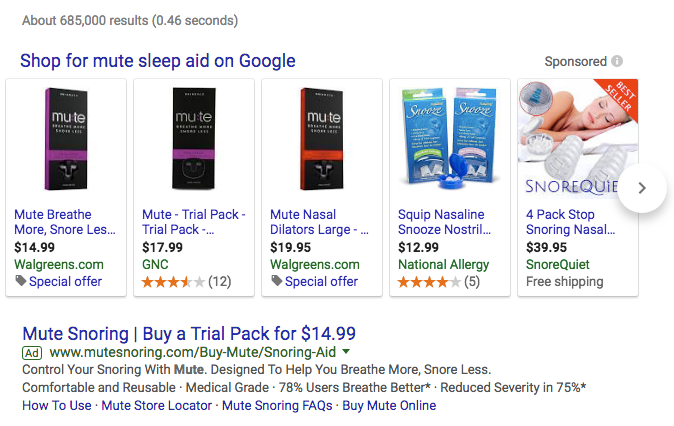
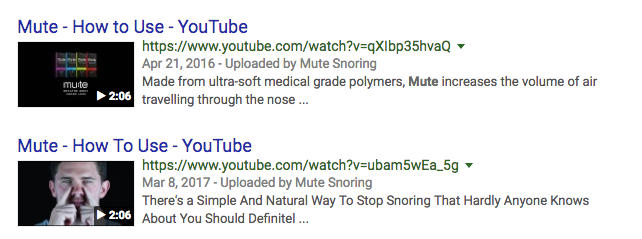
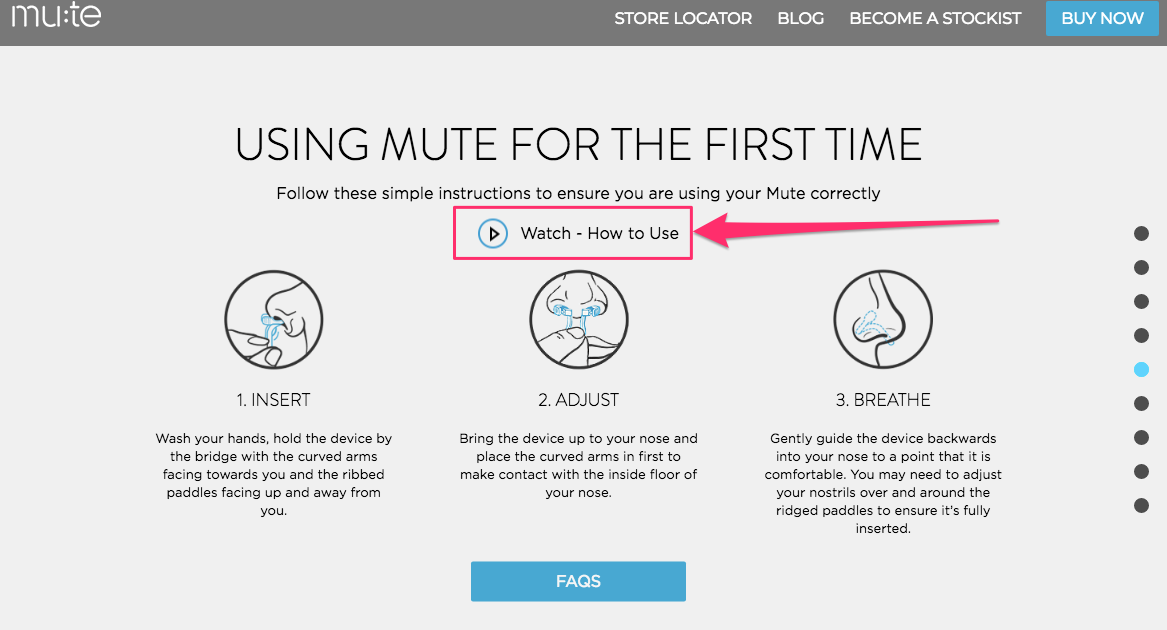


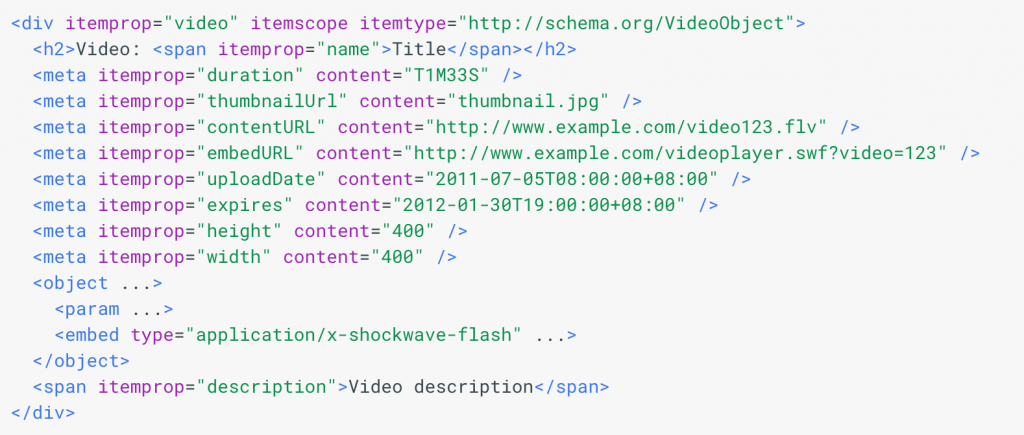
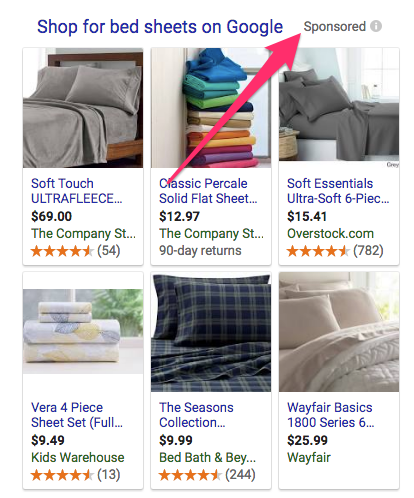
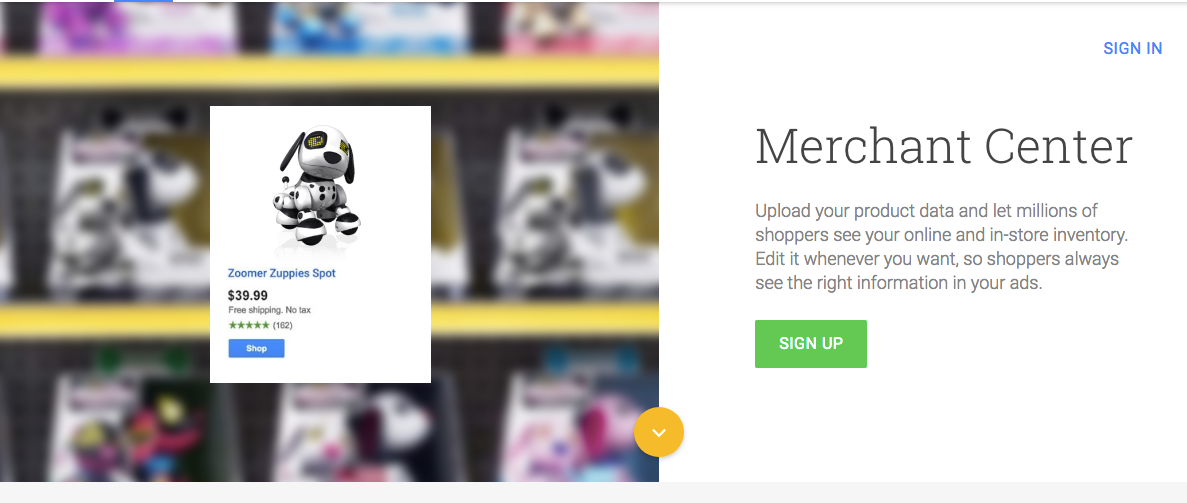
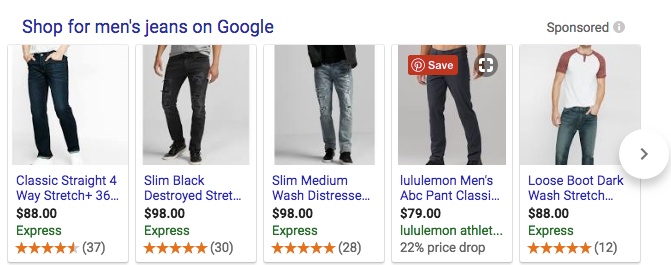
Comments (30)